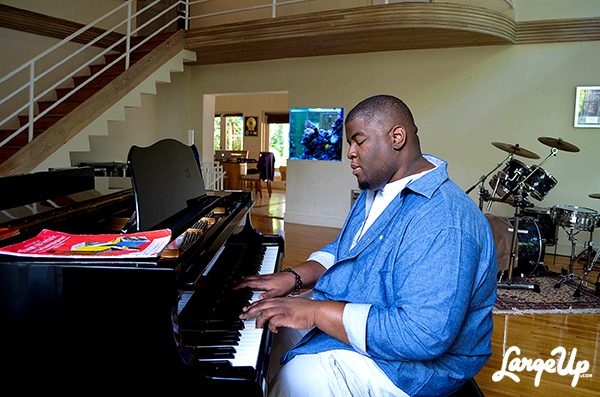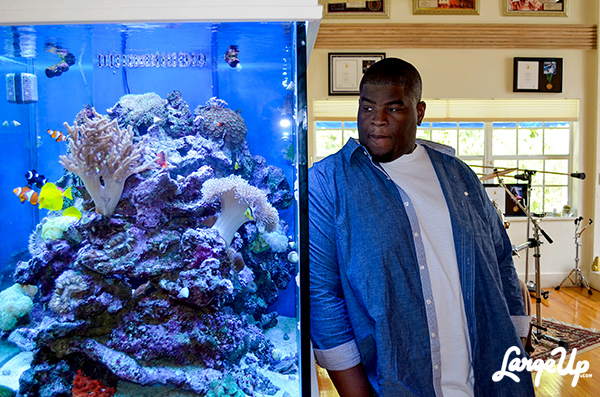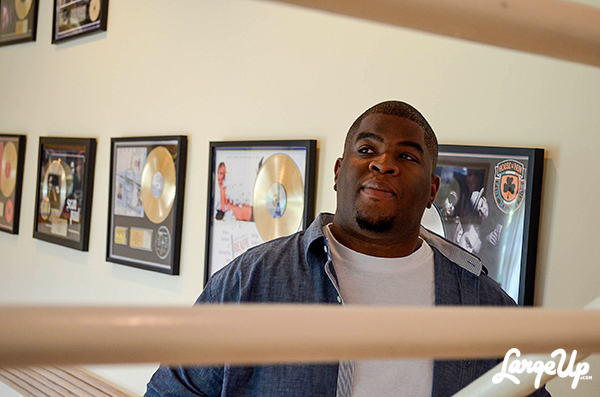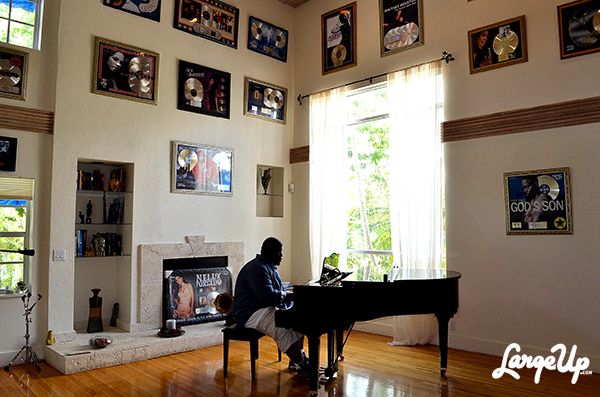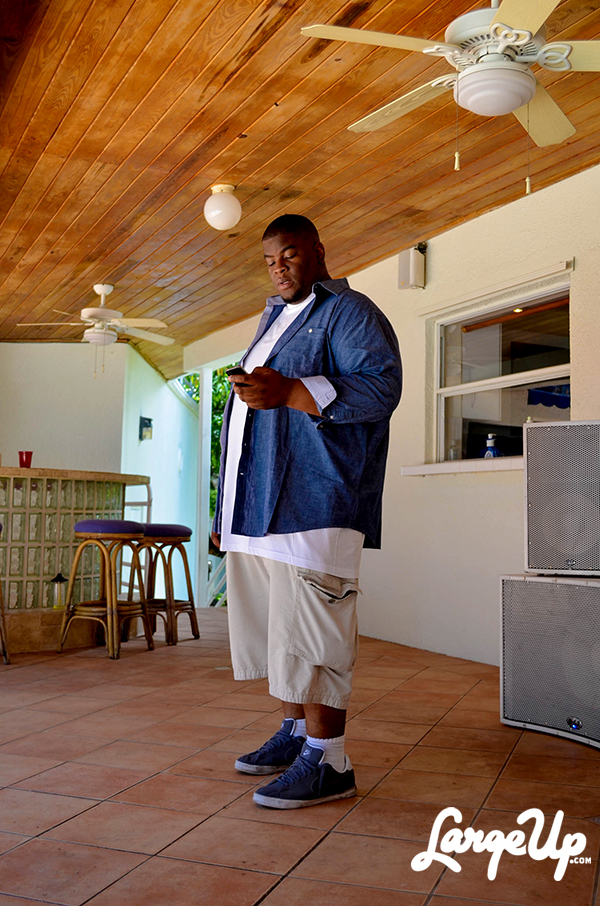LU: There was a lot of hip-hop back in the ’80s inspired by the Caribbean, but almost never authentic enough probably to pass the Jamaica test. With your father being West Indian in the music business, were you around producers in the 80’s that were making real reggae and dancehall?
SR: If someone asked me at that time if I was West Indian, I might have thought about it and said, “oh yeah, my dad’s from Trinidad, his father is from Barbados.” I know what a good roti skin tastes like and what a bad roti skin tastes like, but musically it wan’t something that I was necessarily applying until when I was working with Bobby, cause that was part of his thing. He had a house record with Mutabaruka called “The Poem.” My sound is authentic to whatever my goal is. If I want to do a jazz record, it feels like jazz, if I do a hip-hop record it feels like hip hop. Nas always said, “that’s your thing, feeling.” It’s all about trying to capture emotion sonically. Being able to transmit that to people who’ve never seen me, or know I exist. It’s a remote control thing, inspiration, to be able to move people that you’ve never even seen or touched. With the whole reggae hip hop thing, Bobby brought the real yard vocals, and I brought the real hip-hop and I was able to put it together, to the point where I was making my own tracks doing you know. One of the uncovered, undiscovered records that I did most of is Mega Banton’s One Million Megawatts album. I did my version of the Sick rhythm with “Combination Part 2” on there. I started building rhythms for Patra, and people never never knew I did it.
LU: What were some of the things you did for her?
SR: I pretty much remixed all the singles, and then on the second album I did “Banana,” “Wining Skill.” There’s probably a good 15. I produced and remixed “Think.” Most of her singles. Vivian Scott was a good friend of mine. She gave me my first remix ever, then she signed Patra.
JS: What was your first remix?
SR: Leotis’ ‘Ooh Child,’ a Kid Capri mixtape version of the Five Stairsteps’ classic, with some breakbeats underneath it. That was July of 89, I just got out of high school. Vivian Scott also signed Lil Vicious, Shabba and Patra to Epic back then and she was a big supporter of mine and I ended up working extensively with them. I was in Midtown, I was easy to deal with, and when they gave me a record that’s raw from Jamaica, I could make it work in radio here. It was ok, now we need a radio mix, who could do it, OK, Salaam’s here, when can I have it, okay it’s Thursday I’ll give it to you Monday. Cool, here’s a reel, here’s you check, come back you got your work, play it for the marketing meeting. And I’m locked in with the DJs, and the records were good and they were fitting into the playlist, so I’m doing two, three records a week [snaps fingers].

LU: Were you working directly with artists from Jamaica? There was a compilation you did with Bobby Konders…
SR: NYC Badmen. Bobby recorded most of the vocals. Rev. Baddo “Bop Scutchie,” that’s one of my favorite records that I actually sing to people and they be like, “what the hell are you saying,” and laugh. Bobby recorded them on his reggae riddims, then I came in and threw beats under there and remixed that stuff. Shabba, Patra, Vicious, the Epic artists, I was working with in the studio. I linked with Spragga when he was on Capitol. We did “Hardcore Loving,” on his first Capitol album. Certain ones would come to New York, and I would actually deal with them like Mega Banton and Mad Cobra.
After the being-a-reggae-artist-signed-to-a-major-label album thing passed, I started my own labels, doing colored vinyl 45’s. In the mid 90s to the late 90’s, I probably did around 11 rhythms that I put out on my own. And those artists would come out to NY and work with me. Jah Snowcone was my right hand man. It would be like who in town? Yo, Elephant Man in town, Future Trouble in town. Sean Paul would be in my studio a lot. It was almost like the yard vibe when you go to Jamaica. and there’s artists and selectors in the studio. My studios in NY were like that. You’d see Crazy Richie, Baby Wayne Movements, Twitch, Jack Sowah, a whole bunch of selectors, then you’re seeing artists, Wyclef and Sean Paul. Spragga was a fixture in the studio, Red Rat. I’d usually have a reggae session going on one side, and a pop section on the other side, so everybody was there mingling. You hang around me you might see anybody.
LU: When did you leave New York for Miami?
SR: I left NY 2001, or 2002.
LU: Why?
SR: It was just time. I outgrew it. 2001 was a rough year for me, my mom passed, my grandfather had passed. I needed a break and I came here to do [an] album, and when I got here, I just felt relaxed.
LU: I have heard that you and Amy Winehouse made a reggae album at some point in St. Lucia. Can you tell me anything about that?
SR: We were there recording and stuff but there was never an album done like that. That was just people talking.

